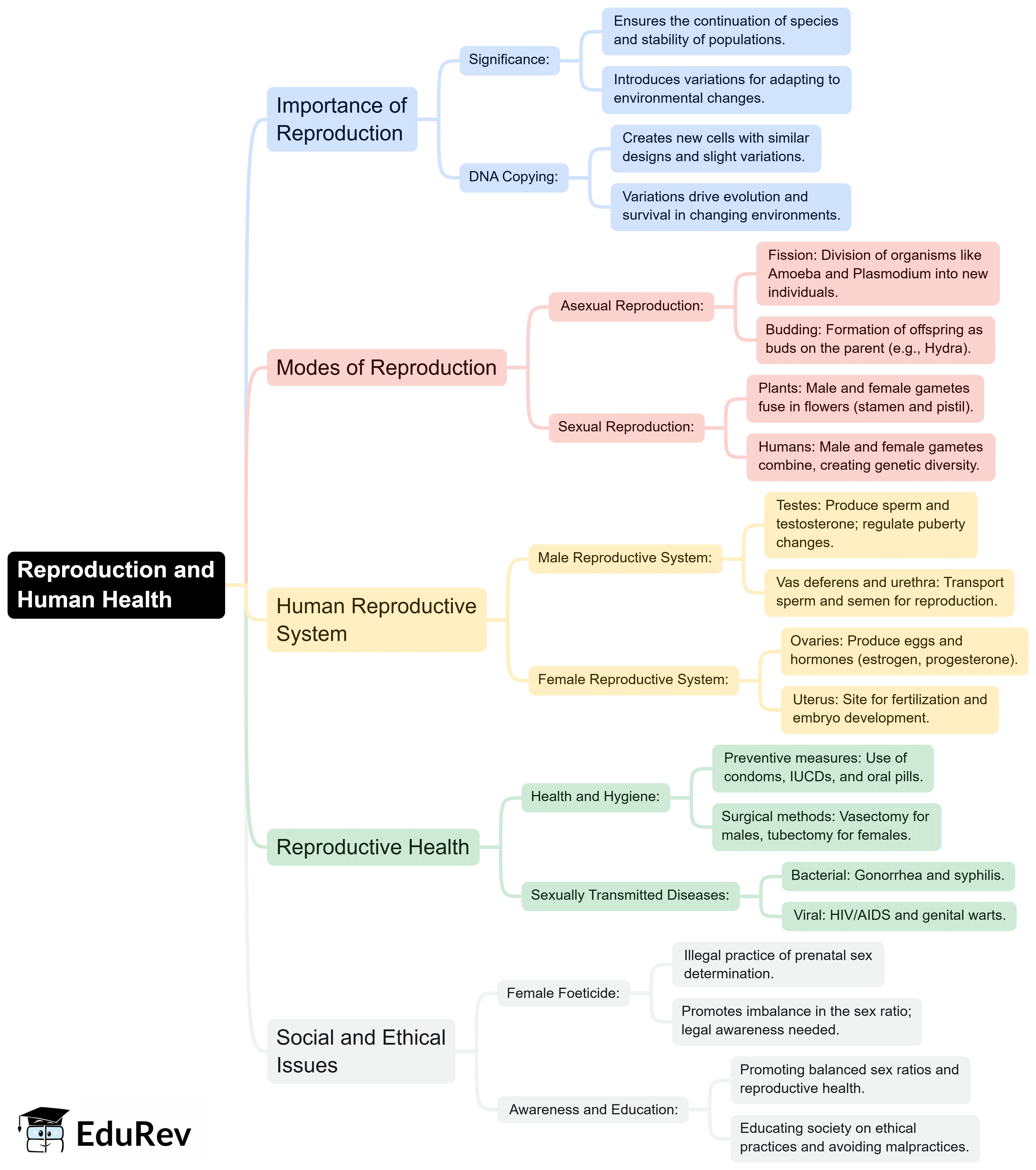Class 10 Exam > Class 10 Notes > Subject-Wise Mind Maps for Class 10 > Mind Map: How do Organisms Reproduce?
Mind Map: How do Organisms Reproduce? | Subject-Wise Mind Maps for Class 10 PDF Download

The document Mind Map: How do Organisms Reproduce? | Subject-Wise Mind Maps for Class 10 is a part of the Class 10 Course Subject-Wise Mind Maps for Class 10.
All you need of Class 10 at this link: Class 10
FAQs on Mind Map: How do Organisms Reproduce? - Subject-Wise Mind Maps for Class 10
| 1. What are the main types of reproduction in organisms? |  |
Ans. The main types of reproduction in organisms are asexual and sexual reproduction. Asexual reproduction involves a single organism producing offspring without the need for gametes, resulting in genetically identical clones. Examples include binary fission in bacteria and budding in yeast. Sexual reproduction involves the combination of genetic material from two parents, leading to genetically diverse offspring, as seen in most animals and plants.
| 2. How does asexual reproduction occur in organisms? |  |
Ans. Asexual reproduction occurs through various methods, including binary fission, budding, fragmentation, and vegetative propagation. In binary fission, an organism divides into two equal parts, as seen in bacteria. Budding involves the formation of a new organism from a small outgrowth on the parent, common in yeast. Fragmentation occurs when an organism breaks into pieces, each capable of growing into a new individual, while vegetative propagation involves the growth of new plants from parts of the parent plant, such as roots or stems.
| 3. What are the advantages of sexual reproduction? |  |
Ans. The advantages of sexual reproduction include genetic diversity, which enhances the adaptability of a population to changing environments. It allows for the combination of beneficial traits from two parents, increasing the chances of survival and evolution. Additionally, sexual reproduction can help eliminate harmful mutations, contributing to the overall health of the population.
| 4. What role do gametes play in sexual reproduction? |  |
Ans. Gametes are specialized reproductive cells that play a crucial role in sexual reproduction. In animals, males produce sperm, and females produce eggs. During fertilization, a sperm cell fuses with an egg cell to form a zygote, which develops into a new organism. Gametes carry half the genetic material of the parents, ensuring that offspring inherit a mix of traits from both parents.
| 5. How do environmental factors influence reproduction in organisms? |  |
Ans. Environmental factors such as temperature, light, and availability of resources can significantly influence reproduction in organisms. For instance, many plants and animals have specific breeding seasons that correspond to favorable environmental conditions, ensuring the survival of their offspring. Changes in habitat or climate can affect reproduction timing, success rates, and even the choice of reproductive strategies, leading to adaptations over time.
Related Searches






















